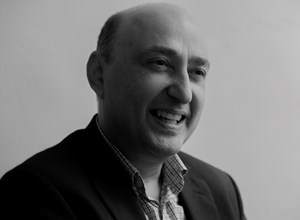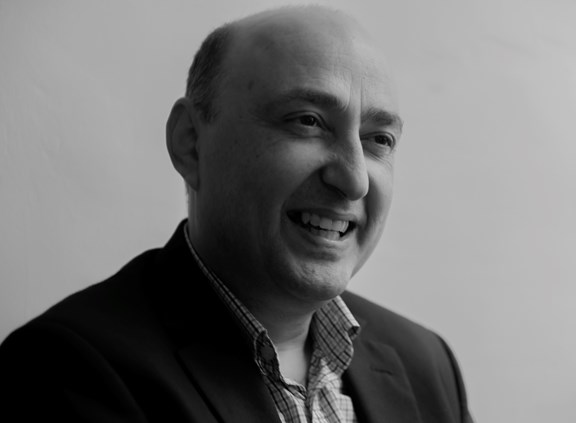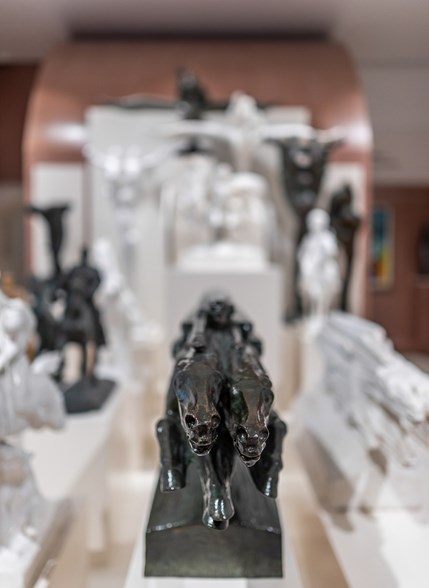
"The role of the museum today should be more about the ambition of firmly displacing the human towards the centre of a comprehensive, one-weave experience. The stories told, the experiences and the display presented, as well as the services provided should be weaved and intertwined into one albeit each would contribute distinctively to one and the same vision. This also concerns the simplest of actions, needs and requirements of a cultural space designated to be acknowledged as a museum".
Image: Sandro Debono PhD, Museology, Art History and Curatorial Practice, Consultant, Culture, Office of the President of the Republic (Malta)
As change continues to incubate on the fringes of the museum landscape, up and coming innovators in the museum world struggle with a status quo that has now surfaced in the latest controversy about the new museum definition.
Art Dependence, Etienne Verbist (AD): The Why-Purpose & The What?
Sandro Debono (SD): Let me start by affirming what I believe in. I stand by the ambition that the future art museum institution may and can certainly aspire to be participatoryand inclusive beyond programming. It can aspire to be public-centred and presenting polyphonic narratives. In short it can aspire to be a public space with a curatorial model that seeks to negotiate meaning rather than unquestionably setting a dogmatic yardstick for value and significance.
I firmly believe this to be a very necessary requirement in this day and age given that the essence of spirituality has been constantly shifting beyond organised religion. Art has an unquestionable spirituality that is inherent to the work itself. Indeed, it is the role and obligation of the museum to present, articulate and educate about this inherent spirituality and the ways and means how to experience an artwork beyond its maker, market value and historical significance.

Sandro Debono PhD, Museology, Art History and Curatorial Practice, Consultant, Culture, Office of the President of the Republic (Malta), image credit to Nigel Baldacchino
This thinking often times goes beyond the traditional museum institution which is much more akin to acknowledging and celebrating a narrative decided and presented by art historians. Indeed, there is oftentimes resistance to new technologies standing right next to artworks, inspire of the need to promote accessibility in all its forms.
AD: What is the future of art?
SD: I always think of what T. J. Clarke once stated when I get to think and write about anything about the future which is short of a prediction proper. In his very own words - “If what I say now seems to be very reasonable, then I will have failed completely. Only if what I tell appears absolutely unreasonable have, we any chance of visualising the future as it really will happen.” Being unreasonable does have it pitfalls so instead of thinking long-term I prefer to look at the immediate now and soon after.
We cannot shy away anymore from the fact that art has always been in synch with the ever-morphing landscape of the art market now opening up to new possibilities such as blockchain technology.
There is very little discussion happening today about the real outcome and expected results of participatory museum practices that are highly likely to evolve further over the coming years.
There is disruptionin all this, particularly in the ways and means we have understood art and acknowledged value in the artwork itself.
The more participatory the museum institution becomes, the more new technologies take centre stage, the closer we get to new as yet unwritten narratives of art histories that are much more democratic and which may reflect a rather different range of aesthetic values than those generally shaped and formed by influential art galleries and curators.
Blockchain technology may radically change the way we look at collection’s development practices, ownership and status.
There is disruption happening in the museum world too. I do believe in the idea of a non-museum. This would refer to that museum institution which has relatively no relevance and significance to the now as it rejects the standard, stereotyped norms of what constitutes a museum institution. It would fail to qualify as mainstream on many counts for the simple reason that it would oftentimes not fit within a standard definition. Orhan Pahmuk’s Museum of Innocence is one of these non-museums, conceived on the periphery of the museum landscape but by now fully integrated within the museum world to be rightfully considered as a possible model for future museums.
There is an even bigger challenge coming our way with artificial intelligence. Indeed, this technology may soon question what has until now been recognised as exclusive to humanity given the first ever work of art created by a non-human intelligence in the last months. The fact that it has not been accepted outright is telling and reminds me of the fact that rejection of the new is often times temporary. That is to me the biggest development we will be witnessing in the coming months and years even though there is still the question of big data the ways and means how that data is biased in a historic, subjective way also reflecting changing styles, taste and political convictions in the broadest sense of the word.
AD: Why do you do what you do?
SD: Why do I do what I do?
This is quite an exciting question that has set me thinking. I am a firm believer in change for the good and benefit of society. Transforming, reshaping and rethinking a traditional art museum institution has been one of my ambition for the past decade and more. It is not just a question of conviction and vision.
Once a good friend of mine, former curator at the Victoria and Albert Museum was quick to tell me that we’re paid out of the public purse and that this means that we owe a service to our publics who have every right to expect it from us. This is also the case with many other projects that I have embarked on over time including exhibitions and publications. I don’t and never believed in things that are conceived in the spur of the moment, as my projects are usually well and extensively researched oftentimes down to the bolts and nuts of their structure or shape. My curiosity keeps me focused on research and learning, and the need to keep up to speed with all that is happening in the museum world. It is mostly curiosity and the never-quenched appetite to discover more and more that keeps me at it.
AD: How to be happy?
SD: I think that happens when you fulfil your mission and ambition in life. I have dedicated my time, and continue to do so, to my passion. Art and culture have been at the heart of my professional practice for close to 30 years. Going to work knowing too well that what you will be doing is guided by passion means that there is very little need for a work-life balance. There are also other things besides my family, which I enjoy. Books, books and more books are such a thing. I end up buying much more books than I can read and rarely stick to one subject albeit museums and art history are favourite subjects. Discussing, debating and sharing knowledge and ideas, particularly with my students, is also something I enjoy doing. At the end of the day it is always a pleasure to share experience not only in papers and publications but also through discussion and debate. It is oftentimes enriching for me too. Indeed, some of my best ideas that generally end up in papers and research questions are incubated this way.
EVB : What about the role of the museum today ?
SD: This I have a very strong opinions to share about. I did express myself in presenting the type and extent of institution I believe in, the role of a new generation of curators that is much more into museology and cultural heritage management than just being pure-breed art historians. I will not go into the need to engage with local communities and audiences.

Image for Sandro Debono, Photo: Fritz Grimm
The role of the museum today should be more about the ambition of firmly displacing the human towards the centre of a comprehensive, one-weave experience. The stories told, the experiences and the display presented, as well as the services provided should be weaved and intertwined into one albeit each would contribute distinctively to one and the same vision. This also concerns the simplest of actions, needs and requirements of a cultural space designated to be acknowledged as a museum. It may oftentimes refer to the need for knowledge ladders that empower access, inspire social justice and function akin to agorae in the Greek sense of the term, which is where social justice and minority rights, which I like to describe in terms of a search for polyphony, come into the picture.
AD: My education?
SD: I read for my first two degrees at the University of Malta but what really shaped and made me who I am today, in the academic sense of the word, is my doctorate at University College London which I consider to be a life changing experience. I have also published extensively in peer reviewed journals, run a blog publication and continue to write and publish books. I’m working on three publications at the moment after having wrapped up a second edition of an exhibition catalogue of one of my projects.

ArtDependence Magazine is an international magazine covering all spheres of contemporary art, as well as modern and classical art.
ArtDependence features the latest art news, highlighting interviews with today’s most influential artists, galleries, curators, collectors, fair directors and individuals at the axis of the arts.
The magazine also covers series of articles and reviews on critical art events, new publications and other foremost happenings in the art world.
If you would like to submit events or editorial content to ArtDependence Magazine, please feel free to reach the magazine via the contact page.